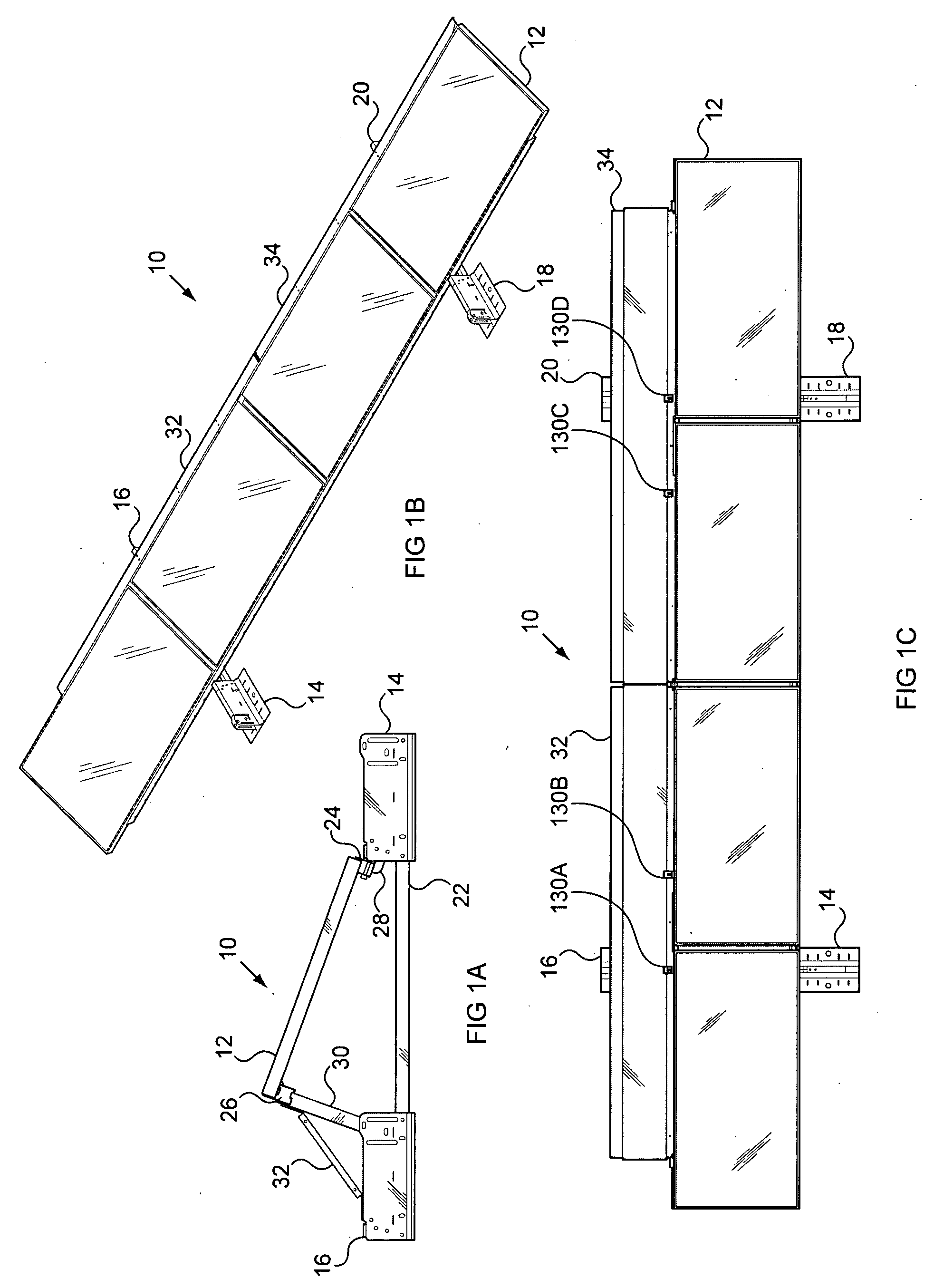Solar array mounting system
a solar array and mounting system technology, applied in the direction of solar heat collector mounting/support, solar heat collector safety, light and heating apparatus, etc., can solve the problems of increasing the cost of photovoltaic solar panels with other types of energy generation, increasing the cost of photovoltaic solar panels, or both
- Summary
- Abstract
- Description
- Claims
- Application Information
AI Technical Summary
Benefits of technology
Problems solved by technology
Method used
Image
Examples
first embodiment
[0060]FIGS. 2A-2D illustrate the construction of the spars in greater detail. In a preferred embodiment, the spars are roll formed from 1 / 16″ steel. In an alternate embodiment the spars can be made from extruded aluminum. The length of a spar is determined by the number of solar panels used in an installation for the module assembly, but is typically between 12-24 feet. illustrated in cross-section in FIG. 2A, a spar 40 has a generally rectangular hollow body (illustrated as a generally square cross-section), with a top channel 44 and a bottom channel 46. Along one edge, the metal is folded back on itself to form an extended section 42. The extended section 42 abuts the edges of the solar panel frames. The front edge 48 of the bottom channel is angled at less than 90° from vertical to facilitate the engagement of a clamp (described below). A perspective view of this embodiment is shown in FIG. 2C.
second embodiment
[0061]a spar is shown in FIG. 2B. It has a similar construction as the spar of FIG. 2A, except that its front edge 58 of its bottom channel 56 angles away from the front edge of the spar 50. This edge 58 facilitates the engagement of a second clamp embodiment (described below).
[0062]For installed solar array systems, it is important to have a common “equipment ground” i.e. to insure that all the metal surfaces are at a common electrical ground reference. For mounting systems made entirely of aluminum or stainless steel, an equipment ground may be easily obtained since all the surfaces are conductive. As long as each component of the system is securely fastened to the other components, a good equipment ground can be obtained. In addition, most photovoltaic solar panels are manufactured with an aluminum frame around the panel. The frame includes mounting holes on the rear side of the panel for mounting the panel to a support structure. Thus, attaching the aluminum frames to a conducti...
PUM
 Login to View More
Login to View More Abstract
Description
Claims
Application Information
 Login to View More
Login to View More - R&D
- Intellectual Property
- Life Sciences
- Materials
- Tech Scout
- Unparalleled Data Quality
- Higher Quality Content
- 60% Fewer Hallucinations
Browse by: Latest US Patents, China's latest patents, Technical Efficacy Thesaurus, Application Domain, Technology Topic, Popular Technical Reports.
© 2025 PatSnap. All rights reserved.Legal|Privacy policy|Modern Slavery Act Transparency Statement|Sitemap|About US| Contact US: help@patsnap.com



